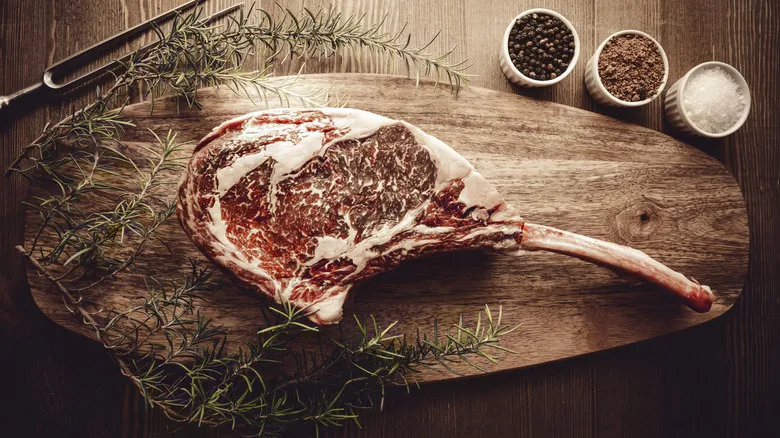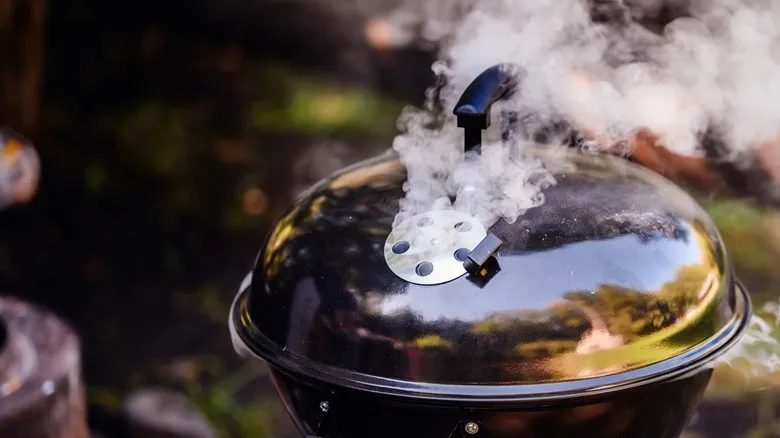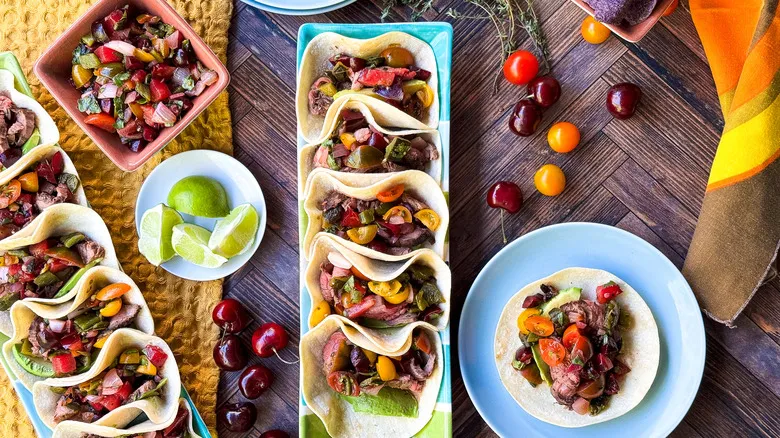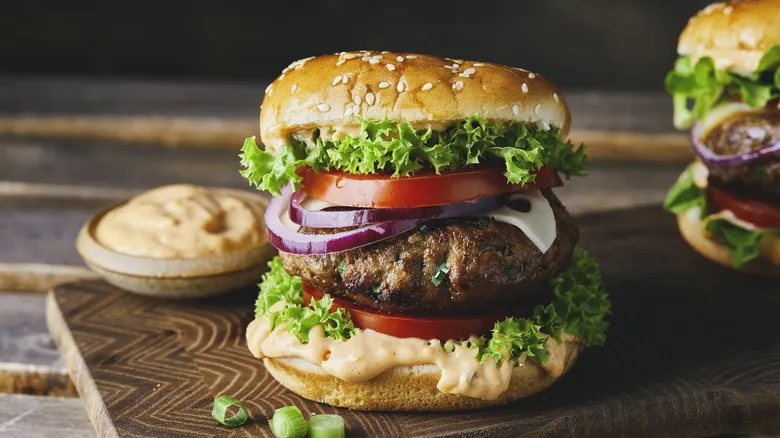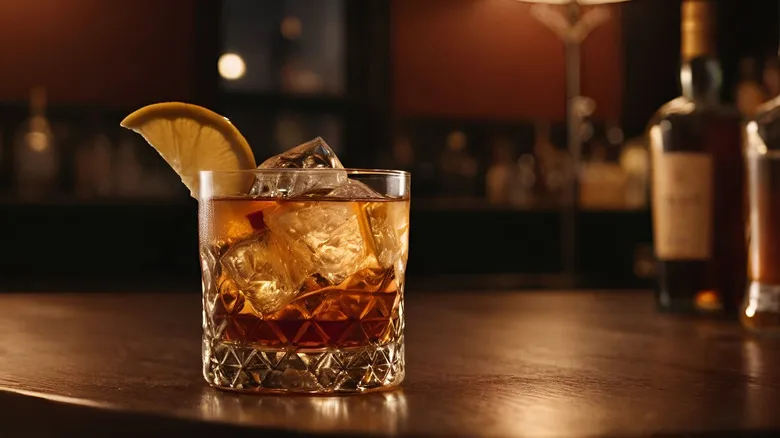Michael Lomonaco's warning about dry-aged beef
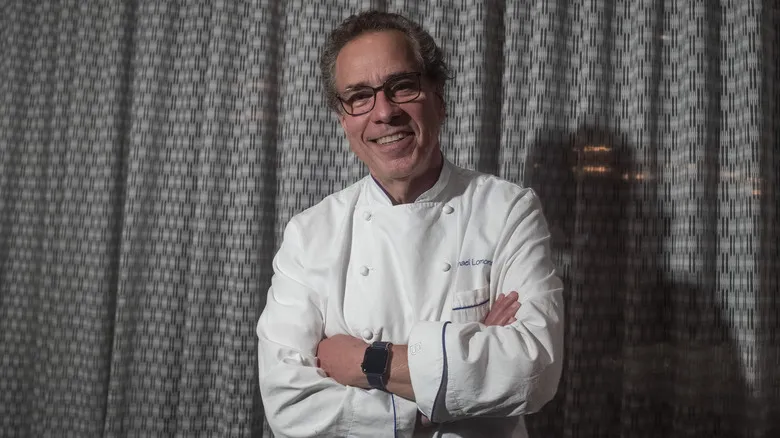
Chef Lomonaco is well-versed in the art of steak, especially when it comes to dry-aged cuts. The signature dish at Porter House, their USDA Prime porterhouse steak, undergoes a 28-day dry aging process before it hits the grill. However, despite his expertise with dry-aged beef, Lomonaco points out that grilling these steaks can be quite challenging.
"The dry aging process removes a significant amount of the cut's natural moisture, which makes grilling dry-aged beefsteaks particularly difficult. The aged beef doesn't respond the same way to the push test," he explained.
While this might not pose a major issue—since studies have shown that the touch test for assessing meat doneness is often unreliable—it's a different story for seasoned chefs compared to novices. The more steaks you prepare, the more attuned you'll become to their texture, and with experience, you can learn to assess doneness based on that texture. The challenge with dry-aged steaks is that, due to the loss of moisture, their texture differs from that of a regular steak, requiring you to adjust your understanding of the grilling process.
Beginning grillers should pick a different cut

Dry-aged steaks are highly sought after, but the additional time and effort involved naturally increases their cost. If you're just starting to hone your grilling skills, jumping straight into the world of dry-aged steaks can significantly impact your budget if things don’t go perfectly. That’s why Chef Lomonaco suggests starting with more budget-friendly cuts that offer a bit more leeway for mistakes.
"I recommend beginning your steak journey with more forgiving and economical options like London Broil and Chuck steaks before progressing to the pricier rib and strip steaks," Lomonaco advised. "As your grilling skills improve, you'll find yourself craving these more expensive cuts, and taking the time to master your specific grill will make you feel like a true expert."
Recommended
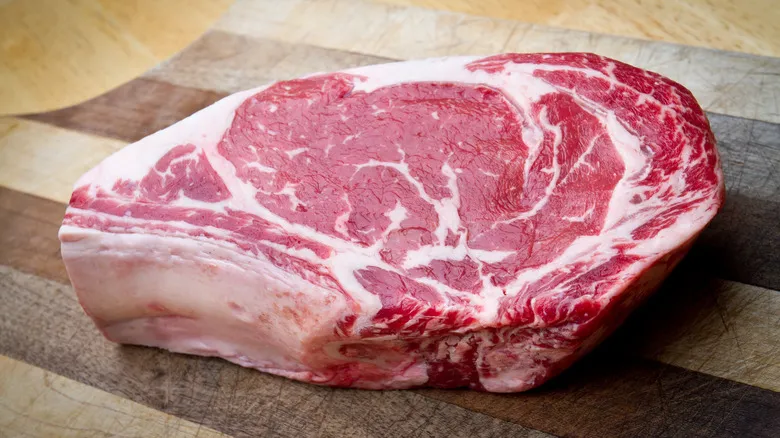
Why Ribeye Steak Is The Perfect Cut For Grilling
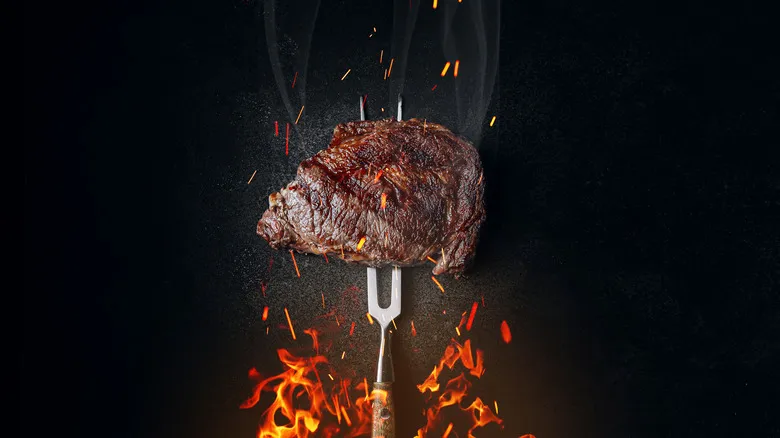
The Secret To Grilling Steak Is All In The Preparation

Guy Fieri's Super Stuffed Steak Is A 4th Of July Showstopper

Stop Fish From Sticking To The Grill For Good With One Ingredient
Next up

